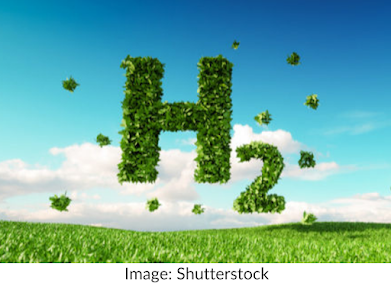Material Self-Healing Properties: How Bacteria Strengthens Concrete
Due to its high compressive strength, concrete is perhaps the most popular material for bridge components, including beams. However, concrete has a low tensile strength, making it prone to cracking. These cracks, if left unfixed, make it easier for water or other substances to seep in, which can cause severe widespread deterioration in the structure. Concrete forms when a mixture of water and cement - which is composed of elements like calcium, silicon, aluminum, and iron - dries up and hardens.
Self-healing concrete, often called bacterial concrete, is a material innovation in which concrete mends cracks by itself with bacteria. Two forms of bacteria with a food source are added to a typical concrete mixture in tiny capsules to create bacterial concrete. These bacteria have a bio-mineralization property. They remain inactive while the concrete is in good shape, but when a crack forms and water enters, the tiny capsules are dissolved, thus activating the bacteria. The bacteria releases the mineral calcite, which works as a natural cement, effectively sealing the cracks in the concrete; after the crack is sealed, the bacteria return to being inactive and can reactivate for up to 200 years when water seeps in through new cracks. Currently, bacterial concrete can heal cracks up to 0.8mm in about 28 days.
In a study done to test the effectiveness of adding bacteria capsules to concrete, it is stated that because most concrete mixtures have similar densities, “the inclusion of bacteria will not affect the density of the hardened concrete.” In a study measuring the strength of bacterial concrete, two aggregate densities were examined. The coarse aggregate had a density of 1850 kg/m^3 and the fine aggregate had a density of 1240 kg/m^3; each type of aggregate also had 5 ml of bacteria for every liter of water used to make the concrete mixture. The study states that, “in standard grade concrete the compressive strength is increased up to 10.92% at 28 days by addition of bacillus megatherium bacteria…” when compared with regular concrete.
Calcite has a trigonal crystal structure, making it a strong material to fill the cracks . With its cracks filled with a crystalline solid, bacterial concrete has decreased permeability plus increased durability and stress resistance compared to regular concrete. These properties give bacterial concrete and structure made out of it a longer life span. This translates to both economic and environmental benefits. Bacterial concrete does not need to be replaced often, which saves money; in fact, according to estimates, "the E.U. could save €120 million in annual maintenance cost, were it to use self-healing concrete in bridges, tunnels and earth-retaining walls alone, In addition, (perhaps most excitingly) this means that less of the material will need to be produced! The primary material needed to make concrete - cement - makes up 5% of global CO2 emissions, so producing less of it would reduce environmental damage! However, the biggest challenge with bacterial concrete is that its initial cost is much higher than traditional concrete. Bacterial concrete would serve as an excellent material for bridge beams because it is stronger than traditional concrete, allowing it to withstand a higher amount of force and harsher environmental conditions, which are critical advantages for bridges.
Sources:
https://constructionor.com/self-healing-concrete/
https://www.sciencedirect.com/science/article/abs/pii/S0950061817313752
https://www.cement.org/cement-concrete/how-cement-is-made
https://www.certifiedenergy.com.au/emerging-materials/the-concrete-of-the-future
https://en.wikipedia.org/wiki/Calcite
Images:
https://www.horseen.com/project/Ningluo-speed-Nanjing-bridge-crack-repair
https://www.researchgate.net/figure/Self-healing-mechanism-in-bacteria-concrete_fig1_330320560
https://www.theengineer.co.uk/wise-crack-self-healing-concrete/






Comments
Post a Comment